The Hyundai i20’s dashboard warning lights are an essential component of the vehicle’s safety features, providing vital information about the vehicle’s systems and components.
However, without a clear understanding of these warning lights, drivers may overlook potential issues, leading to unnecessary repair costs and safety risks.
As you take the wheel, it’s vital to recognize the various symbols and indicators that illuminate on your dashboard, but what do they really mean?
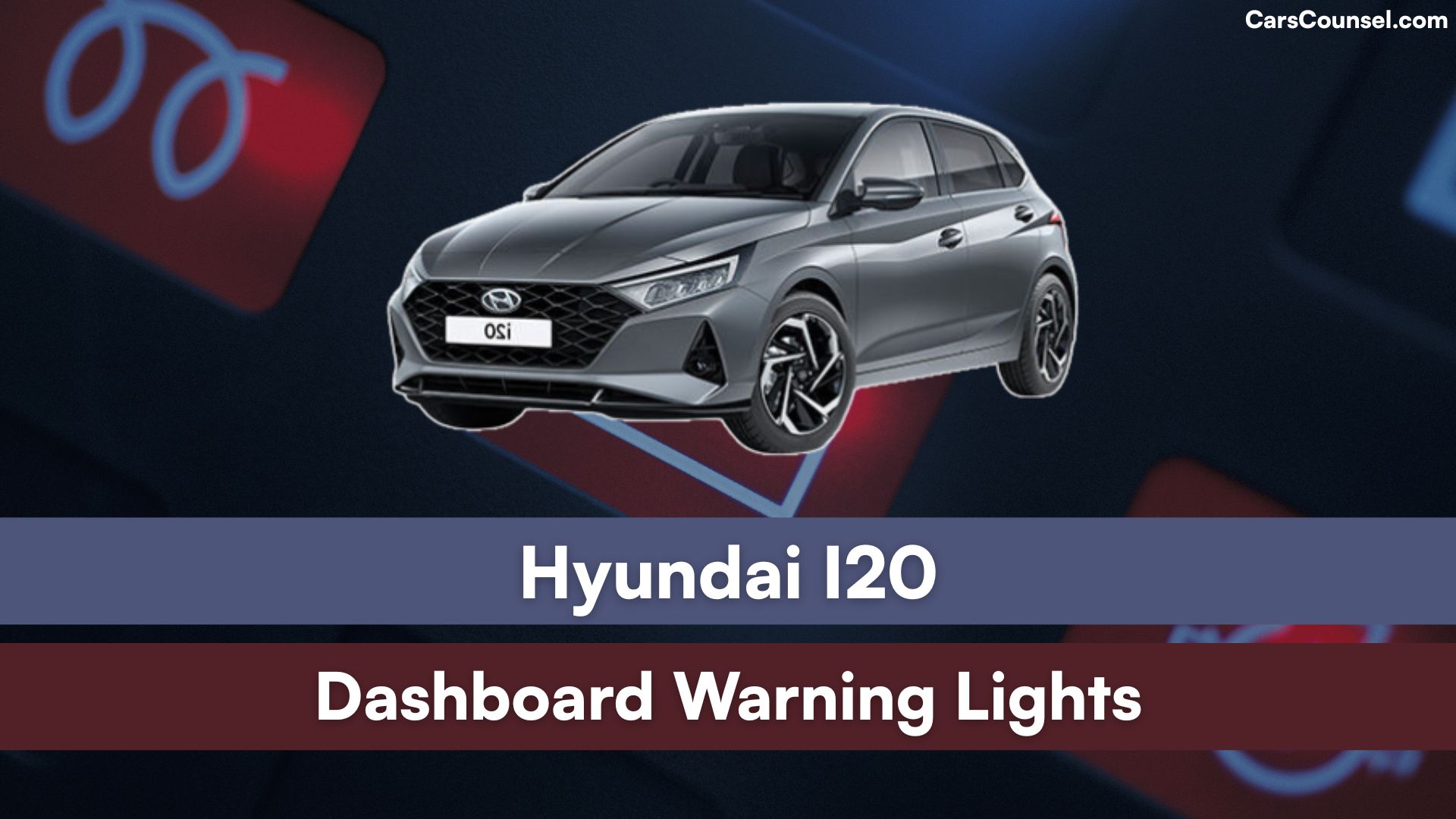
With a vast array of warning lights, from engine and safety alerts to fuel and tyre warnings, it’s essential to stay informed to guarantee a safe and smooth driving experience.
Quick Navigation
Dashboard Warning Lights Overview
The Hyundai i20 dashboard display features a range of warning lights, each designed to alert the driver to a specific issue or malfunction.
Dashboard Symbols
These dashboard symbols play a pivotal role in ensuring the safe operation of the vehicle, providing essential information about the vehicle’s systems and components.
Warning Light Meanings
Understanding warning light meanings is essential to identify and address potential problems promptly.
System Malfunction Indicators
Irregular fuel consumption, loss of power, and speedometer malfunctions are just a few examples of issues that may be indicated by warning lights on the Hyundai i20 dashboard.
Familiarising yourself with the various dashboard symbols and their corresponding warning light meanings can help prevent minor issues from becoming major problems.
Safety and Engine Warning Lights
Safety and engine warning lights are a vital component of the Hyundai i20’s dashboard display, providing essential information about the vehicle’s safety and engine systems.
Airbag Warning Light

These lights alert the driver to potential issues that require immediate attention, ensuring the safety of occupants and preventing further damage to the vehicle. The airbag warning light, for instance, indicates a Faulty Airbag, which can compromise the vehicle’s safety features.
Check Engine Warning Light
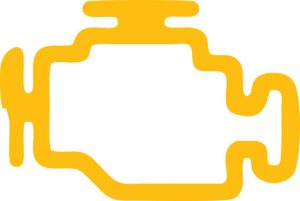
The check engine warning light, on the other hand, signals Engine Failure or a fault with the emissions control system, which can lead to costly repairs if left unattended.
Promptly addressing these warnings is vital to maintaining the vehicle’s overall performance and safety.
Fuel, Emissions, and Tyre Warning
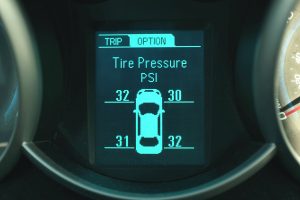
Fuel, emissions, and tyre warning lights play a crucial role in the Hyundai i20’s dashboard display, alerting drivers to potential issues that require prompt attention to guarantee peak vehicle performance, fuel efficiency, and safety.
Fuel Filter Warning Light

The fuel filter warning light, for instance, illuminates on diesel versions, indicating water accumulation in the fuel filter, which can lead to increased fuel consumption and decreased fuel efficiency.
Tyre Pressure Warning Light
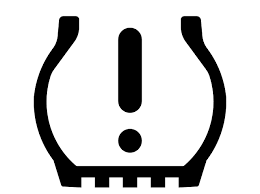
In the same way, the tyre pressure warning light comes on when one or more tyres are deflated, affecting fuel efficiency and overall vehicle performance.
Prompt attention to these warnings guarantees superior fuel consumption, reduced emissions, and improved safety on the road.
Diagnostic Steps and Troubleshooting
Identifying the root cause of a warning light issue in the Hyundai i20 requires a systematic approach to diagnosis.
Fault Diagnosis Process
Fault diagnosis involves a combination of warning interpretation, scan equipment, and diagnostic tools to pinpoint the problem.
Electrical System Check
Start by checking the dashboard warning lights to identify the specific issue, then consult the owner’s manual for guidance on warning light meanings.
Diagnostic Tools
Use a diagnostic tool to read fault codes and guide repairs. Check the vehicle’s electrical system for faults and inspect the power steering pump and motor for signs of failure.
Airbag System Verification
Verify the airbag system is functioning correctly and check the oil level and pressure regularly.
Causes of Warning Lights and Common Issues
The Hyundai i20’s dashboard warning lights can be triggered by a variety of faults and malfunctions.
Faulty Electronics
Faulty electronics, such as a faulty ABS sensor or module, can cause warning lights to illuminate.
Ignition Issues
Ignition issues, including a faulty battery or alternator, can also trigger warning lights.
Power Steering Warning

Power steering pump or motor failure can cause the power steering warning light to appear, resulting in loss of power and speedometer malfunction.
Airbag System Malfunctions
Airbag system malfunctions or sensor issues can trigger the airbag warning light, while low oil pressure or level can activate the oil warning light.
These faults can cause a range of warning lights to appear, including the yellow warning light, which may indicate loss of power and sluggish performance.
Understanding Airbag Warning Lights
Airbag system malfunctions or sensor issues can trigger the airbag warning light, which demands immediate attention to guarantee the safety of occupants.
SRS Warning Light
This warning light typically appears as a symbol of a person with a circle and an “X” mark, indicating a fault with the Supplemental Restraint System (SRS).
Airbag Deployment Risk
Failure to address this issue promptly can lead to inadequate airbag deployment in the event of a crash, compromising the vehicle’s safety features.
It is vital to have the airbag system inspected and diagnosed by a qualified technician to identify the root cause of the malfunction and perform necessary repairs to safeguard the safety of all passengers.
Brake and ABS Warning Light Issues
Brake system malfunctions can pose a significant threat to road safety, and the brake warning light is a crucial indicator of potential issues.
Brake Warning Light
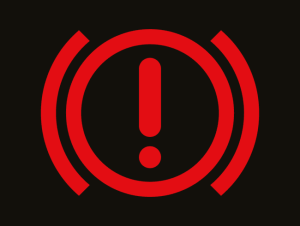
If the brake warning light stays on, it may indicate that the handbrake is still applied or the brake fluid level is low. In some cases, it can also signal a brake failure, which requires immediate attention to avoid accidents.
ABS Warning Light
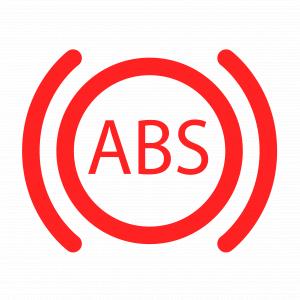
The ABS warning light, on the other hand, indicates an ABS malfunction, which can compromise vehicle stability and control.
In both scenarios, prompt action is necessary to address the issue to prevent further damage or safety risks. Diagnostic testing and professional assistance may be necessary to identify and rectify the underlying cause of the warning light.
Engine Performance and Power Steering
Hyundai i20’s engine performance and power steering systems are critical components that can significantly impact the vehicle’s overall reliability and safety.
Power Steering Warning Light
The power steering system is responsible for assisting the driver in steering the vehicle, while the engine performance system guarantees maximum power output. However, issues can arise, resulting in power loss and steering failure.
Engine Performance Warning
The power steering warning light may illuminate, indicating a fault with the electronic power steering system. This can lead to tight or difficult steering, compromising vehicle control.
Additionally, engine performance issues can cause a loss of power, resulting in sluggish performance and irregular fuel consumption.
It is vital to address these issues promptly to prevent further damage and guarantee safe vehicle operation.
Oil and Coolant Warning Light Issues
As the power steering system relies on a properly functioning engine, issues with oil and coolant can have a ripple effect, impacting the overall performance and safety of the Hyundai i20.
Oil Pressure Warning Light
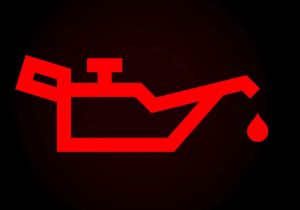
Oil leaks, for instance, can lead to low oil pressure, triggering the oil warning light. If left unchecked, this can cause engine damage and decreased performance.
Coolant Temperature Warning Light
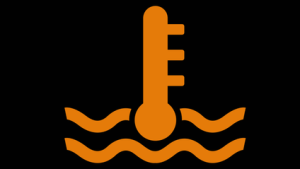
In the same manner, low coolant levels can cause the engine to overheat, leading to the engine overheated warning light. Failure to address these issues promptly can result in costly repairs and compromise the vehicle’s safety.
Regular checks of oil and coolant levels, as well as prompt attention to warning lights, are essential to preventing these issues and ensuring the Hyundai i20 runs smoothly and efficiently.
Master Warning Light and Service Reminders
The master warning light on the Hyundai i20 dashboard is a multifaceted indicator, responsible for alerting the driver to a range of issues that require attention.
Master Warning Light
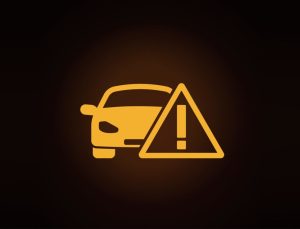
This light is often linked to service schedules and maintenance reminders, ensuring the vehicle is properly serviced and maintained.
Service Reminder Indicator
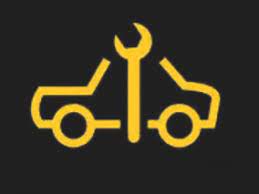
When the master warning light illuminates, it may indicate that a service interval needs to be reset, prompting the driver to schedule a maintenance check.
Failure to address these reminders can lead to more severe issues, such as engine damage or safety hazards.
Battery Charge Warning Light
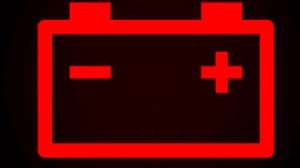
Indicates issues with the charging system or low battery voltage. May prevent engine start if ignored – have alternator and battery checked immediately.
Glow Plug Warning Light (Diesel)

Illuminates during cold starts to indicate glow plug heating. If stays on, indicates malfunction requiring service to ensure proper diesel engine operation.
Electronic Stability Control (ESC) Warning
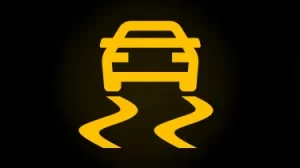
Shows traction control system malfunction. Drive cautiously as vehicle stability may be reduced, especially in wet or slippery conditions.
Lane Departure Warning System (LDWS) Alert

Indicates system malfunction or obscured camera. The lane keeping assist feature may be disabled until the issue is resolved.
Service Required Warning Light

Illuminates when scheduled maintenance is due. Follow manufacturer’s recommended service intervals to maintain vehicle performance and warranty coverage.
Washer Fluid Level Warning

Alerts when windshield washer fluid is low. Top up fluid reservoir to maintain visibility and safe driving conditions.
Always consult your owner’s manual when warning lights appear and seek professional diagnosis for persistent warnings to maintain your Hyundai I20’s performance, safety and longevity. The vehicle’s advanced diagnostic systems provide detailed fault codes that help technicians quickly identify and resolve issues.
Pre-Collision Warning System Alert

Flashing red light with audible beep signals imminent frontal collision risk. The system may automatically apply brakes if driver doesn’t respond – keep sensors clean for proper operation.
Electronic Parking Brake Warning
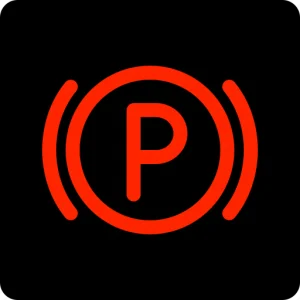
Indicates malfunction in the automatic parking brake system. Manual override available but parking on inclines should be avoided until system is repaired.
AdBlue® System Warning (Diesel)
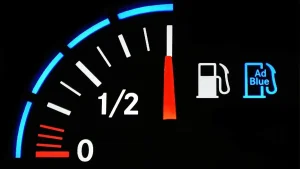
Signals low diesel exhaust fluid level or system fault. Engine power will gradually reduce if not refilled – top up AdBlue® tank to maintain emissions compliance.
Catalytic Converter Warning
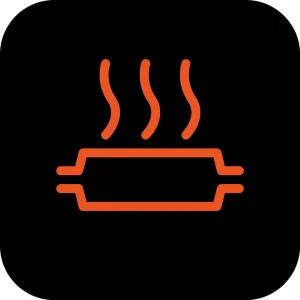
Illuminates when converter temperature is excessively high. Continued driving may cause permanent damage – reduce speed and have system checked immediately.
Smart Key Battery Warning

Flashing light indicates key fob battery is low. Replace CR2032 battery promptly to maintain keyless entry and push-button start functionality.
LED Headlight Malfunction

Shows fault in LED lighting system. While basic lighting remains, advanced features like auto-leveling may be disabled – have system diagnosed.
Blind Spot Collision Warning
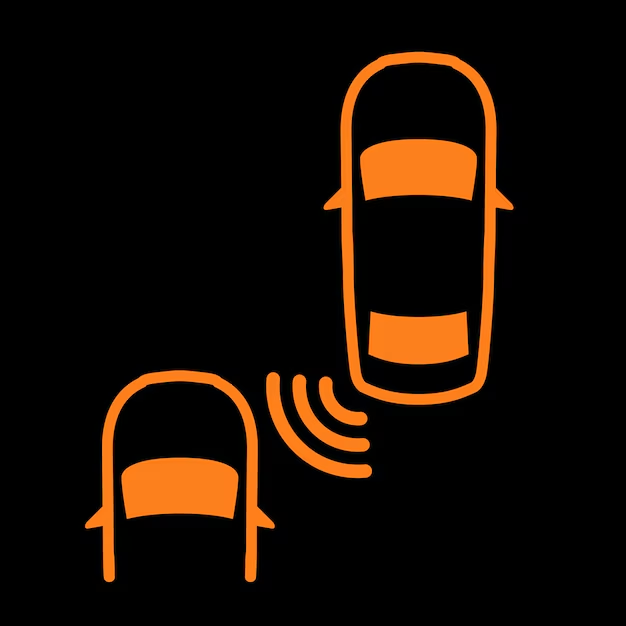
Alerts when system detects vehicles in blind spots but can’t provide alerts due to sensor obstruction. Clean rear radar sensors for optimal performance.
Driver Attention Warning
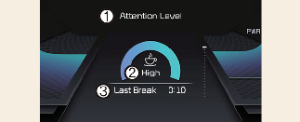
Coffee cup symbol appears when detecting drowsy driving patterns. Take a break if light persists – system resets after sufficient rest period.
Climate Control Warning
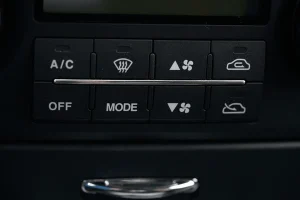
Shows HVAC system malfunction. Basic heating/cooling may still work but automatic temperature regulation could be disabled.
Parking Sensor Warning

Indicates obstruction or fault in ultrasonic sensors. The automatic parking assist feature will be unavailable until repaired.
When looking at Hyundai, make sure to check out our guides on models like the Hyundai Tucson, Hyundai Palisade, Hyundai Elantra, and Hyundai Santa Fe. Understanding dashboard warning lights is essential. Our expert reviews break down what each light means, highlighting common alerts for these models and what they could signal about underlying issues, so you’re never left guessing behind the wheel.

